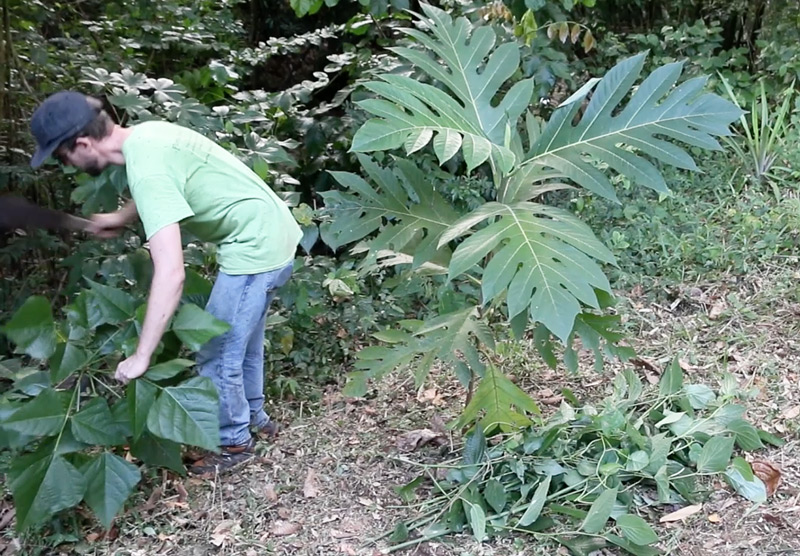Over at Permies.com, Laurence Keela has some info on growing your own mulch:
“Our land has low levels of nitrogen and we are looking to fix this without the use of chemical fertilizers. Our land is already growing nitrogen fixing plants (Clovers, vetches and bird foot) trees (mimosa) and shrubs (broom). So it seems that nature naturally fixes itself if left to its own devices. However we want to speed this up by growing a lot more green material for mulching as well as fixing nitrogen into the ground. These are called cover crops, green manure or green mulch.
This will not only give us a better supply of mulch for composting and planting but the plants will fix nitrogen into the ground. As we usually like to mulch around our plants with a layer of green mulch followed by a layer of brown mulch, we will continually grow these nitrogen fixers in half of our annual garden every year to have green mulch readily available.
If you’re new to this, here is some terminology for the following article:
Cover crops: Annual plants such as clover that you plant on a resting field or bed to prevent soils drying out, washing away and to fix nitrogen into the ground.
Mulch: Organic biomass that is used to cover the soil to prevent soils drying out, prevent weeds from growing, stop top soil washing in rain and to provide nutrients to the microorganisms in the soil (e.g. hay)
Living green mulch: For example: clover can be grown around plants to act as a living mulch to prevent soils from drying out, hold off weeds and fix nitrogen
Green Manure: This is cuttings of cover crops that can be used in compost piles or as green mulch (see mulch above). Green mulch is higher in nitrogen than brown mulch (e.g. dry leaves, straw or hay)
Annual nitrogen fixing cover crops:
Listed below are the ideal times to plant cover crops that fix nitrogen in the soil…”
Read the whole thing and the plant lists here.
I cover growing your own mulch/compost in Compost Everything. It will transform your gardening.


1 comment
This is my current thinking, David. It hit me like a ton of bricks, too. There I was wondering how I was going to fix my stripped soil from the decades of farming that took place before we moved here. Pete Kanaris was always on about perennial peanut or sunshine mimosa for fixing bad soil but those plants are not only difficult to find; they are expensive. I just bought up what my local feed store had left of a newer crop of clover called frosty berseem clover and I may go back and buy the last six pounds of red clover as well. I’m doing a lawn replacement and eradicating cogon grass at the same time and this just seems like a no-brainer. What do you think? Have you tried this any of the places you lived?
Comments are closed.